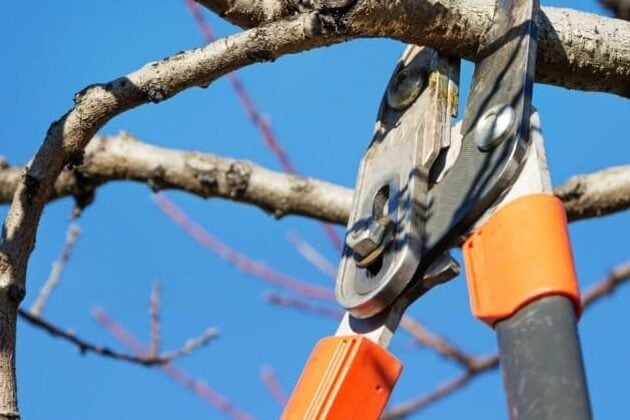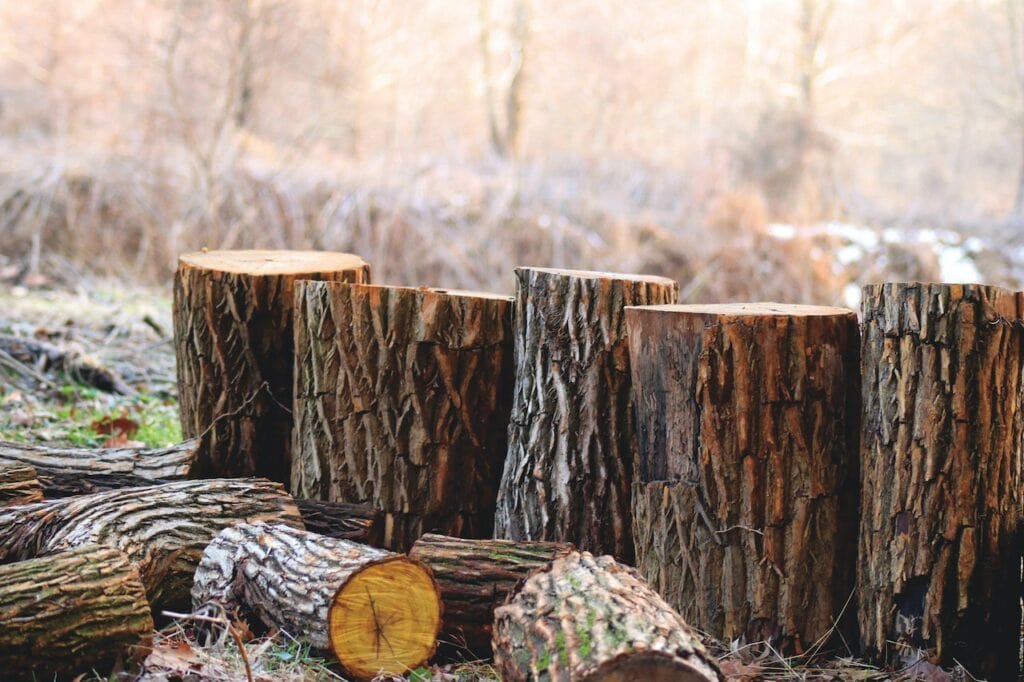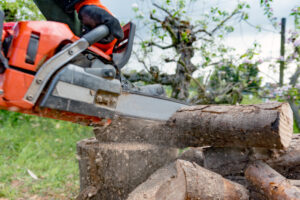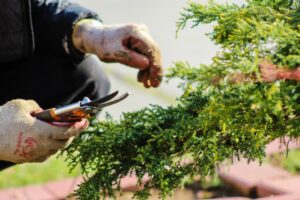Shade, beauty, and even oxygen are just a few of the many advantages of having trees in your yard. Nonetheless, there are instances in which they might become a nuisance or even a liability. This is especially important to remember when trees are situated close to property lines or other boundaries. In this piece of writing for our site, we will discuss what boundary trees are and why they are significant and provide you with some advice regarding tree removal to assist you in dealing with them.
What are Boundary Trees?
Trees situated on or close to property lines or other borders are referred to as "boundary trees," a moniker that fits their location. As a result of the ambiguity around who owns them and who is responsible for caring for them, they might catalyse conflict between neighbours. Depending on the circumstances, boundary trees may even be protected by municipal laws or regulations, which can make it a difficult and contentious problem to cut them down or change them in any way.
Common and presumed boundary trees are the two types of boundary trees that can be categorised. Shared boundary trees are ones that have been planted along the boundary line and are thus shared by both neighbouring property owners. On the other hand, presumed boundary trees are trees found close to the boundary line but not actually situated on it. It is presumed that they are on either the left or the right side of the trunk, depending on which side of the trunk is physically closer to the respective property.
Why are Boundary Trees Important?
There are several reasons why boundary trees are so very important. To begin, they have the potential to offer both properties increased levels of privacy and shade, in addition to enhancing the neighbourhood's aesthetic appeal. They also have the potential to serve as natural windbreaks, mitigating the damage caused by gusty gusts to neighbouring houses and other structures.
On the other hand, border trees can only be properly managed or sustain any harm. Roots, for instance, have the potential to penetrate sewer lines and other subsurface facilities, while branches and limbs that fall from trees can cause property damage. In addition, the tree can transmit diseases or pest infestations to other trees and plants in the area if it gets sick or afflicted.
Impact of Boundary Trees
Trees that serve as boundaries can have a tremendous influence not only on the landscape that surrounds them but also on the people who live in the area. The following are some of the most important effects that boundary trees have:
Shade: During the hot summer months, boundary trees can give valuable shade, which can help keep neighbouring homes and businesses cool, which in turn can help minimise the amount of money spent on cooling expenditures. People can also find comfort in the outdoors thanks to the shade provided by trees, which can be enjoyed in the fresh air.
Privacy: Trees have the potential to act as a natural barrier between homes that are adjacent to one another, which can increase levels of privacy and decrease levels of noise.
Beauty: A property's aesthetic value can be improved by adding trees since they impart a feeling of natural beauty, colour, and texture to the surrounding landscape.
Erosion control: Trees play an important role in preventing soil erosion by keeping soil in place with its roots. This is of utmost significance in regions with slopes that are very steep or have problems with soil erosion.
Wildlife habitat: Several different kinds of species, such as birds, insects, and small mammals, find the habitat that trees provide to be extremely beneficial. Removing a boundary tree may cause disruption to this habitat and harm the ecosystem in the area.
Nonetheless, border trees may have a negative impact. Take, for instance:
Damage to structures: Trees have the potential to cause harm to neighbour structures like homes, fences, and power lines if the trees topple over or if the trees' roots grow too close to the structures. This could lead to expensive repairs as well as put both persons and property in harm's way.
Conflict with neighbours: When a tree extends its roots beyond the boundaries of one property, you and your neighbours may disagree over how to prune it, take care of it, or get rid of it.
Safety hazards: If trees are unhealthy or have become overgrown, they present a risk of injury to humans and damage to property if they fall or lose limbs. This is especially important to remember when severe weather is on the horizon, such as a hurricane or a thunderstorm.
Property values: The presence or absence of trees can affect a property's value. The value of surrounding properties and your own could decrease if you cut down a tree that serves as a boundary.
In general, the effect of boundary trees is complicated and has many different aspects. Trees are capable of conferring a variety of benefits, but in addition to this, they can also be hazardous and a source of contention. Therefore, when dealing with boundary trees, it is essential to take into account all of the potential implications and strive towards finding solutions that strike a balance between the requirements and worries of all parties concerned.

What About Care?
Proper care for border trees is essential to maintain their health, beauty, and safety. The following are some suggestions for good maintenance:
Pruning: Maintaining a healthy and secure boundary tree population requires periodic tree pruning. Removing any branches that are unhealthy or have died as soon as possible is important. Also, it would be best if you cut back any branches that are crossing or rubbing against one another. To protect the tree from being injured and to eliminate any potential risks to public safety, pruning should only be performed by experienced arborists.
Watering: It is possible that additional watering will be necessary for the tree to remain healthy if its species and location are taken into consideration. It is essential to water trees deeply and rarely under drought conditions in order to foster the development of deep root systems.
Mulching: When you mulch the area surrounding the trunk of the tree, it can help to keep moisture in the soil, regulate soil temperature, and stifle weed growth. It is essential to use the appropriate kind of mulch and to refrain from heaping it up against the tree trunk since this might lead to rot in the wood.
Fertilising: It's possible that fertilising certain trees will improve their health, but it's critical to get the formulation and dosage of the fertiliser just right. An excessive amount of fertiliser can be harmful to the tree and pollute the water in the surrounding area.
Monitoring for pests and diseases: There is a risk of pests and diseases attacking boundary trees, which could result in harm or possibly the trees' demise. Frequent monitoring can assist in detecting potential issues at an earlier, more treatable stage.
Consulting with an arborist: Consult with a skilled specialist if you need help with how to care for your boundary tree if you fear that it may be injured or infected with a disease, or if you have any other concerns about the health of the tree. An arborist can evaluate the state of the tree's health, offer guidance on how it should be cared for, and make suggestions for any necessary treatments.
If you keep these things in mind, you may contribute to the maintenance of beautiful, healthy, and safe border trees for your property. Sufficient care must be given to trees to ensure they remain healthy and vital contributors to our ecosystem.
Tree Removal Tips for Boundary Trees
If you need to remove a tree that serves as a property border and you have one on your property, the following advice should help the process go more smoothly:
Know the Law.
You must thoroughly understand the local laws and regulations before chopping down a tree that serves as a boundary. The removal of boundary trees may be made more difficult or necessitate the acquisition of special permissions in some circumstances because municipal legislation or zoning rules may serve to protect these trees.
Communicate With Your Neighbors
Removing a tree that serves as a boundary can be a contentious subject, particularly if the tree is positioned close to your neighbour's property. Therefore, it is essential to have open communication with your neighbours and explain the decision to cut down the tree. You may also consider making an offer to divide the expense of removing or replacing the tree with a new one.
Hire a Professional Tree Removal Service
Removing a huge tree, particularly one close to a property line, can be a treacherous and difficult undertaking. Therefore, working with a competent tree removal firm with a valid licence, adequate insurance, and significant prior expertise in managing boundary trees is essential. They will assist you in evaluating the dangers involved, obtaining the relevant permissions, and securely removing the tree.
Consider Tree Preservation
If the bordering tree appears to be in good health and is not presently causing any issues, think again before cutting it down in favour of conserving it. In order to accomplish this, the tree may require fertilisation, trimming, or pruning in order to encourage healthy development and minimise harm to neighbouring property.
Plant a Replacement Tree
You must plant a new tree in its place if you make the decision to cut down a tree that serves as a boundary for your property. This can assist in preserving the aesthetic value of trees as well as their positive effects on the environment, and it can also give your property additional privacy and shade.
In addition to these pointers, it is essential to think about the influence that cutting down a boundary tree will have on the surrounding ecosystem and environment. Because cutting down trees can have a negative effect in a number of ways, including releasing carbon dioxide into the atmosphere and destroying wildlife habitat, it is essential to take preventative measures. For example, consider donating the wood to community organisations that can use it for environmentally conscious purposes or growing new trees in other parts of the property to compensate for the loss of the tree that served as the boundary.
Which Tree Can You Decide To Plant As a Boundary Tree?
In Australia, the types of trees that are utilised as boundary trees vary, based not just on geography but also on the climate. The following are some of the border trees that are most frequently used in Australia:
- Lilly Pilly: This evergreen tree is well-known for the lush foliage it bears, as well as for the pretty pink blooms and tasty berries it produces. Along property lines, it is frequently planted to serve as a screen or hedge.
- Magnolia: Magnolias are well-liked for the gorgeous flowers and the glossy, dark green leaves they produce. Because of the beauty they bring to an area and the privacy they provide, they are frequently utilised as boundary trees. They can be employed as feature trees or hedges.
- Bottlebrush: Bottlebrush trees are well-known for the unusual bottlebrush-shaped blossoms that they bear. These trees are also a popular option due to their resistance to disease and the little amount of care that they require.
- Callistemon: Callistemon trees, which are native to Australia and feature colourful blossoms, are a common choice for use as border trees. These trees are quite similar to bottlebrush trees.
- Eucalyptus: Trees of the genus Eucalyptus are indigenous to Australia and thrive in the temperate environment of that nation. As a result of their rapid growth, attractive bark, and aromatic leaves, they are frequently chosen for use as border trees.
- Grevillea: Grevillea trees are native to Australia and are well-known for the spectacular flowers they produce and the lovely foliage they bear. Because of the beauty they bring to an area and the privacy they provide, they are frequently utilised as boundary trees. They can be employed as feature trees or hedges.
It is essential to choose the appropriate species of tree for your particular geographical location and climate, in addition to taking into account your individual requirements and preferences. A knowledgeable arborist or horticulture can provide you with recommendations on the kinds of trees that would work best in your region to serve as border trees.

Can I cut down a Boundary Tree?
The simple answer to that question is no. If you cannot reach an agreement with both parties, there may be serious repercussions and consequences. Because of the acts you've taken, there is a possibility that a dispute will wind up in court. Get in touch with your local government to learn more about the rules and regulations that must be adhered to.
In Australia, it is common practice to regard the tree at the boundary of two properties to be owned jointly by the owners of both properties. Because of this, both sets of property owners should care for the tree and ensure that it remains in good health and is free from harm. Both of the property owners need to agree before the tree may be cut down or pruned.
If one of the property owners wishes to prune or remove the tree that serves as a boundary between their two properties but the other owner is opposed to the idea, the dispute may need to be settled through legal methods. In some instances, this will require going to court in order to determine the rights and responsibilities of the property owners.
There may be laws and regulations that control the pruning and removal of boundary trees, in addition to the fact that both parties jointly hold their ownership. Therefore, it is essential to verify with your municipal council or the relevant government agency to obtain information regarding the unique regulations and prerequisites that apply in your area because these laws could be different depending on the state or territory.
While working with boundary trees, however, adhering to appropriate trimming techniques and safety protocols is essential. In general, this is the case. In this case, it may be necessary to hire a professional arborist or tree service in order to have the tree evaluated and receive suggestions for its removal or pruning.
If it is determined that removal is necessary, a permit from the appropriate government agency or local council may be required. This permit may come with certain criteria or regulations that must be met before the removal procedure begins, such as utilising suitable machinery and planting a new tree in its stead.
In general, it is vital to operate within the laws and regulations that control boundary trees in Australia in order to preserve their health, safety, and longevity. These factors are all dependent on the trees. This may help prevent disputes between neighbours and ensure that both the community and the environment are preserved.
Conclusion
Your property can benefit greatly from the addition of boundary trees, which offer a variety of advantages such as shade, privacy, and aesthetic value. Yet, they can also produce disagreements and problems with neighbours, in addition to putting neighbouring structures and infrastructure in danger. They can also cause conflicts and problems with neighbours. If you need to take down a tree that serves as a border, it is crucial to follow the advice that was given above to ensure that the operation goes smoothly and without incident. However, keep in mind that even if you decide to cut down a tree, it is critical to consider the effect that this will have on the surrounding ecosystem and to take measures to mitigate the damage that this will cause. You'll be helping to ensure that future generations continue to enjoy the aesthetic value and functional benefits of trees if you take these steps.
Frequently Asked Questions
Is it possible to trim or cut down a tree that serves as a boundary without my neighbour's permission?
You are not permitted to trim or remove a tree located on a boundary unless your neighbour gives you permission. It is possible for doing so to result in legal challenges as well as penalties.
What happens if I don't agree with my neighbour's plan to trim or remove a tree that serves as a barrier between our properties?
If you and your neighbour can't agree on whether or not to prune or remove a tree that's growing on the boundary between your properties, you may need to take the dispute to court to settle it.
Do border trees fall under the purview of any specific rules or regulations?
There should be laws and regulations at the state or local level that govern the process of removing border trees or performing maintenance on them. Therefore, it is essential to check with the local council or the government body responsible for the area in question regarding the relevant rules and requirements.
What can I do to ensure that my border tree continues to thrive?
Maintaining the health of a border tree requires consistent attention in the form of pruning, fertilisation, and watering. In addition, it is essential to be on the lookout for any disease or injury symptoms and address them as soon as possible.
After cutting down a tree that serves as a boundary, is it possible to grow a new tree in the same location?
In certain circumstances, compliance with the law or the conditions of permission may necessitate planting a replacement tree. Therefore, checking the precise requirements with your local council or the government body responsible for the area in question is essential.







